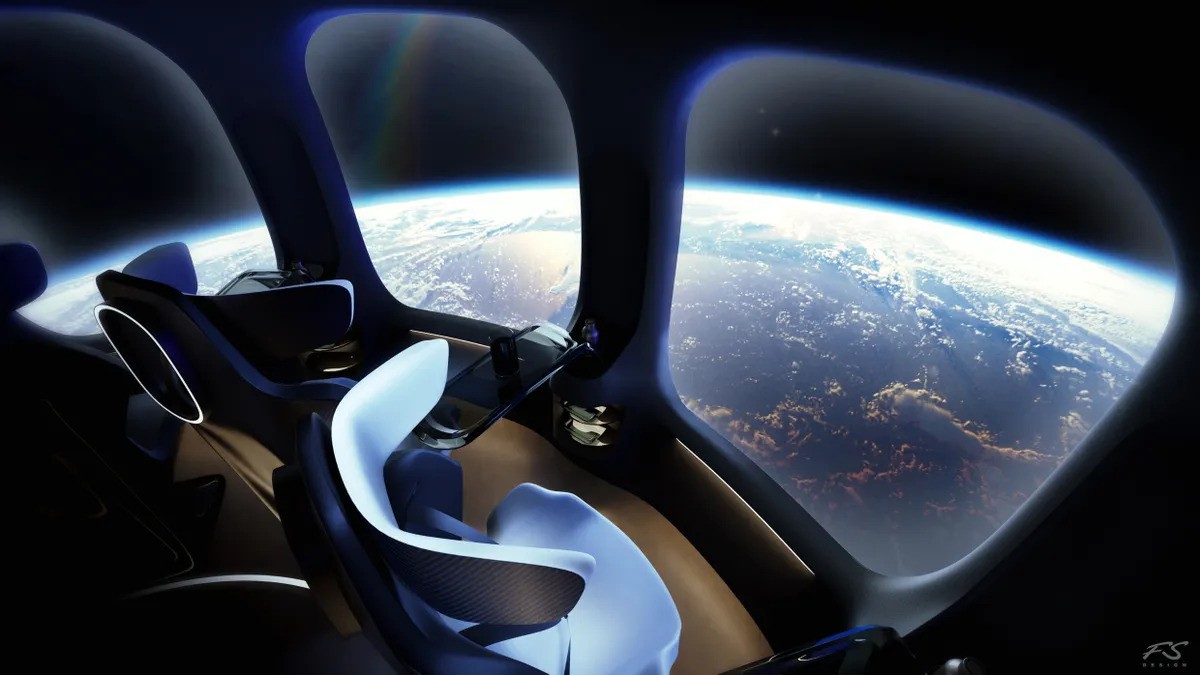The Spanish startup HALO Space has presented a capsule design for stratospheric “glamping”. In fact, it is a balloon that allows you to travel to the edge of space. The company believes that it will be able to compete with other companies offering space tourism.

New concept of “space tourism”
HALO Space, which develops stratospheric balloons, plans to offer space travelers the equivalent of space tourism — glamping. Instead of the cramped spacesuits and overloads that usually accompany rocket flights, the company’s pressurized capsule, attached to a helium-filled balloon, will offer comfortable rotating seats, giant windows and a selection of gourmet dishes.
The Spanish-headquartered firm revealed the design of the 3.5-ton Aurora capsule in London on Wednesday, April 10, and said it hoped to begin commercial operations in 2026.
Unlike companies engaged in suborbital space tourism, such as Virgin Galactic and Blue Origin, HALO Space will not lift passengers high enough so that they can feel weightlessness. The flight will be quite leisurely and will last up to six hours, almost four of which passengers will spend in the stratosphere at an altitude of about 35 kilometers above the Earth’s surface. There, high above the tops of the clouds, passengers will be able to admire the starry blackness of space above, as well as the curved surface of the planet, enveloped by the atmosphere under their feet.
HALO Space is one of two companies that are now preparing their balloon technology to begin commercial flights in the next two years. Another company, Space Perspective, based in Florida, unveiled a completed test model of its Neptune spacecraft in February. The Spaniards also said they had conducted five mock-up test flights and planned to make the first crewed test flight in 2025, and begin commercial flights a year later.
Better than suborbital flight
Both companies hope their offerings will attract the attention of a broader customer base than the shaky flights on Blue Origin and Virgin Galactic rockets that take daredevil customers on short rides to the edge of space and back. Reaching heights almost three times the height of the stratospheric balloons, the Virgin Galactic and Blue Origin spacecraft experience a multi-minute period of microgravity before falling back to Earth.
Traveling with HALO Space will cost about $164,000 per seat, which is about a third of the price of a Virgin Galactic flight, and will not require any additional medical certificates. The capsule is 5 meters wide and 3.5 m high and will be made of aluminum alloy and composite materials.
With an interior space of 2.8 square meters, the spacecraft can accommodate eight paying passengers along with the pilot. The internal atmosphere will be maintained by a life support system similar to aviation. However, despite such a cramped interior and extreme conditions outside the capsule, passengers should feel quite comfortable and be able to relax.
HALO Space’s plans for the future
The fully inflated stratospheric balloon will have a height of 140 meters. During the descent, the balloon will separate from the capsule. Then the capsule will descend to the ground under a controlled parachute. According to the developers, balloon technology is inherently safer than rockets with explosive fuel. It also does not cause greenhouse gas emissions, which makes this trip 100% compliant with the strictest environmental protection standards.
Balloons have been around for over 200 years. This type of balloon, stratospheric balloons, has been around for almost 100 years. The first man ascended into the stratosphere in a hot air balloon in 1931.
HALO Space plans to carry out flights from spaceports in the Mojave Desert in the United States, Spain, Australia and Saudi Arabia. The company is currently working with the U.S. Federal Aviation Administration to obtain a license for the first crewed flight next year.
According to www.space.com
Follow us on Twitter to get the most interesting space news in time
https://twitter.com/ust_magazine


